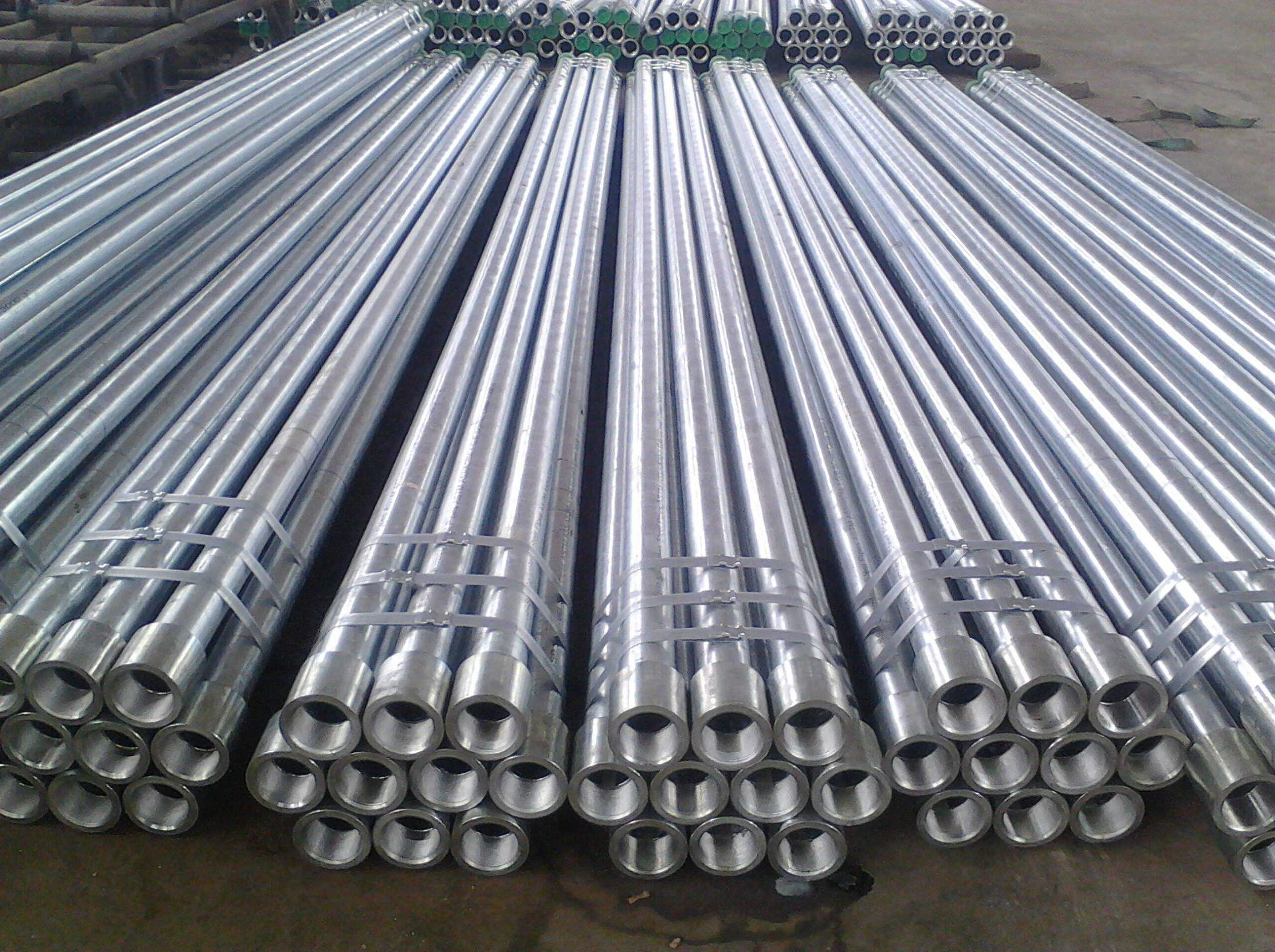Galvanizing pipe refers to the surface treatment technology of plating a layer of zinc on the surface of metal, alloy or other materials to play the role of beauty and rust prevention. The main method is hot galvanizing.
Zinc is easily soluble in acid and alkali, so it is called amphoteric metal. Zinc hardly changes in dry air. In humid air, a dense basic zinc carbonate film will be formed on the zinc surface. In the atmosphere containing sulfur dioxide, hydrogen sulfide and marine environment, the corrosion resistance of zinc is poor, especially in the atmosphere containing organic acid at high temperature and high humidity, the zinc coating is easily corroded.
Galvanized steel pipes are divided into cold plating pipes and hot plating pipes. The former has been banned, and the latter has also been advocated by the state for temporary use.

Hot dip galvanized pipe
It is to make the molten metal react with the iron matrix to produce an alloy layer so that the matrix and the plating layer are combined. Hot dip galvanizing is to first acid wash the steel pipe. In order to remove the iron oxide on the surface of the steel pipe, after acid washing, it is cleaned in the ammonium chloride or zinc chloride aqueous solution or the ammonium chloride and zinc chloride mixed aqueous solution tank, and then sent to the hot dip galvanizing tank. Hot dip galvanizing has the advantages of uniform coating, strong adhesion and long service life. Most of the processes in the North adopt the zinc coating process of direct rolling of galvanized tape
Complex physical and chemical reactions occur between the steel pipe matrix and the molten plating solution to form a corrosion-resistant zinc iron alloy layer with a tight structure. The alloy layer is integrated with the pure zinc layer and the steel pipe matrix. So it has strong corrosion resistance.
Cold galvanized pipe
Cold galvanizing is electro galvanizing. The amount of galvanizing is very small, only 10-50g / m2. Its corrosion resistance is much different from that of hot-dip galvanized pipes. In order to ensure the quality, most of the regular galvanized pipe manufacturers do not use galvanizing (cold plating). Only those small enterprises with small scale and obsolete equipment adopt electro galvanization, of course, their prices are relatively cheap. It is not allowed to use cold galvanized pipes as water and gas pipes in the future.
The zinc layer is a plating layer, and the zinc layer is separated from the steel pipe matrix. The zinc layer is thin, and the zinc layer is simply attached to the steel pipe base, which is easy to fall off. So its corrosion resistance is poor. Cold galvanized steel pipes are forbidden to be used as water supply pipes in newly-built houses.
In order to improve the corrosion resistance of steel pipes, the general steel pipes are galvanized. Galvanized steel pipes are divided into hot-dip galvanizing and electro galvanizing. The hot-dip galvanizing layer is thick, the cost of electro galvanizing is low, and the surface is not very smooth. Oxygen blowing and welding pipe: it is used as steel blowing and oxygen blowing pipe. Generally, small-diameter welded steel pipes are used. The specifications are 3 / 8-2 inches. It is made of 08, 10, 15, 20 or 195-q235 steel strips. In order to prevent corrosion, some of them should be effectively aluminized.
Most of the old houses use galvanized pipes, and the iron pipes used for gas and heating are also galvanized pipes. The galvanized pipes are used as water pipes. After several years of use, a large number of rust scales are generated in the pipes. The yellow water flowing out not only pollutes the sanitary ware, but also is mixed with bacteria breeding on the uneven inner wall. The corrosion causes the high content of heavy metals in the water, which seriously endangers human health. In the 1960s and 1970s, the developed countries in the world began to develop new pipes and gradually banned galvanized pipes. China’s Ministry of construction and other four ministries and commissions have also made it clear that galvanized pipes have been banned since 2000. At present, galvanized pipes are rarely used for cold water pipes in new residential areas, and galvanized pipes are used for hot water pipes in some residential areas


